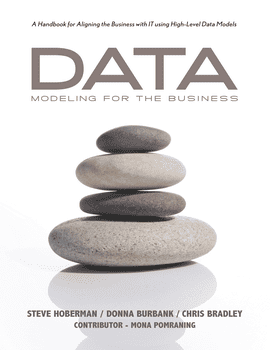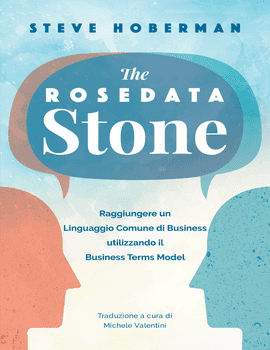Data Modeling for the Business
Data Modeling for the Business: A Handbook for Aligning the Business with IT using High-Level Data Models, by Steve Hoberman, Donna Burbank, and Christopher Bradley
Master erwin DM to deliver robust and precise designs for both operational and analytical projects.
Topics
CHAPTER 1: What is a Data Model?
CHAPTER 2: Why Does a High-Level Data Model Matter?
Integration
Standards and Reuse
Data Modeling for All
Now You Try It! Let’s Build a High-Level Data Model
CHAPTER 3: A More Detailed Look at the High-Level Data Model
Very High-level Data Model (VHDM)
High-Level Data Model (HDM)
Logical Data Model
Physical Data Model
How the Four Levels of Detail Fit Together
Components of a HDM
Now You Try It! Using Concepts and Relationships
Dimensional Models
Now You Try It! Creating a High-Level Data Model for BI Reporting
Some Important Terms
CHAPTER 4: Layout and Formatting Tips for High-Level Data Models
Concepts
Relationships
Other Tips for Effective Model Layout
Now You Try It! Understanding High-Level Data Models
CHAPTER 5: What is in a Name?
CHAPTER 6: Different Modeling Notations
Entity-Relationship (ER) Modeling
Information Engineering (IE)
IDEF1X
Barker Notation
UML Modeling
Object Role Modeling (ORM)
“Natural-Language” Modeling
CHAPTER 7: How High-Level Data Models Fit With Other Initiatives
Business Intelligence and Data Warehousing
Master Data Management
Data Governance
Application Development and Agile Methods
Enterprise Architecture
Process Modeling
Now You Try It! Using HDMs in Your Organization’s Initiatives
CHAPTER 8: Creating a Successful High-Level Data Model
Ten steps to completing the HDM
CHAPTER 9: High-Level Data Model Templates
In-The-Know Template
Concept List
Concept Family Tree
Concept Grain Matrix
Industry Data Models
CHAPTER 10: Putting the Pieces Together
The Ice HDM
The Ice Cube HDM
CHAPTER 11: Justifying a Tool for the High-Level Data Model
Metadata
Reuse
Linking
Impact Analysis
Automation
CHAPTER 12: Key Tool Features for the High-Level Data Model
Integration with Other Tools
Design Layers with Linking Capability
Verbalization from the Data Model
Sensible Notation for High-Level Data Models
Ability to Capture Business Metadata
Presentation of Models
Repository Integration
Ease of Use for Business Users
Now You Try It! Creating Your Criteria for a Tools Evaluation
CHAPTER 13: An Approach for Evaluating Modeling Tools
Why do we Need to Follow a Selection Method?
The Outline Method
CHAPTER 14: Energy Company Case Study
The Pain Point
Identifying Purpose, Stakeholders, and Goals
Implementation
Marketing
Benefits
Steve and Jeff start from the basics, explaining data modeling concepts and how to get up and running with erwin DM (erwin DM). Through a hands-on approach, business analysts, data professionals, and project managers will learn step-by-step how to build effective conceptual, logical, and physical data models. Complete the stages in identifying essential business requirements, designing the logical data model, transposing those logical modeling objects into physical tables and columns, and even generating the implementation database scripts.
This book contains seven parts. Part I provides a foundation in data modeling and Part II a foundation in erwin DM. Part III covers the design layer technique and its application using erwin DM, distinguishing conceptual, logical, physical, and operational data models. Part IV covers entities, domains, attributes, key groups, validation rules, default rules, and subject areas, along with how to implement them using erwin DM. Part V explains the physical data model and how to convert a logical data model to a physical data model in erwin DM. Become confident creating tables, columns, indexes, and views. Part VI reveals advanced features available within erwin DM, including user defined properties, naming standards, forward engineering, reverse engineering, complete compare, report designer, and the bulk editor. Part VII explains several important tools to use in combination with erwin DM, including erwin DM NoSQL, erwin Data Catalog, and erwin Data Literacy.
About Steve, Donna, and Chris
Steve Hoberman is a world-recognized innovator and thought-leader in the field of data modeling. He has worked as a business intelligence and data management practitioner and trainer since 1990. He is the author of Data Modelers Workbench and Data Modeling Made Simple, the founder of the Design Challenges group and the inventor of the Data Model Scorecard®.
Donna Burbank has a unique perspective on the field of data modeling – having helped design and produce several of the leading metadata and data modeling tools in the market today, as well as having spent many years as a consultant implementing these solutions. As a consultant, she has worked with Global 2000 companies worldwide and as a software provider, she has been instrumental in the development efforts at Platinum Technology, Embarcadero Technologies, and CA.
Christopher Bradley has spent almost 30 years in the field of Information Management working on Master Data Management, Enterprise Architecture, Metadata Management, Data Warehouse and Business Intelligence implementations. Currently, Chris heads the Business Consultancy practice at IPL, a UK based consultancy.
Faculty may request complimentary digital desk copies
Please complete all fields.





